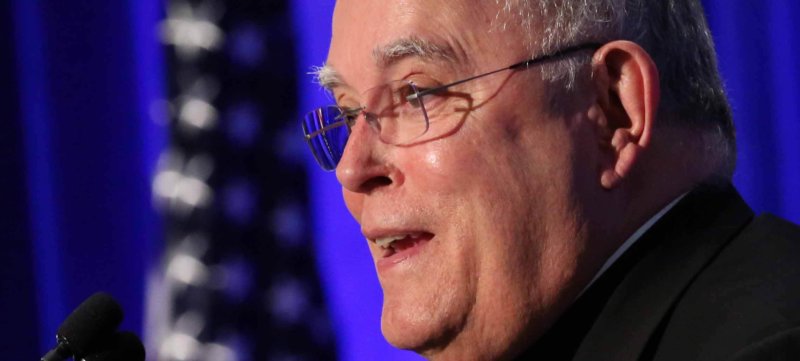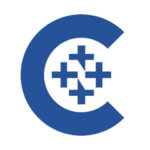PHILADELPHIA (CNS) — Archbishop Charles J. Chaput of Philadelphia said the city’s plan to create a safe drug injection site now that it has the legal go-ahead to do so “is simply the latest dose of despair offered by a confused and suffering culture.”
The culture “refuses to understand the true nature of both addiction and those who are enslaved by it,” he wrote Oct. 25 in his weekly column in CatholicPhilly.com, the archdiocesan news outlet.
On Oct. 2, U.S. District Court Judge Gerald McHugh ruled in favor of the plan by the Philadelphia nonprofit group Safehouse to open a safe injection site, where people can use their own illegal drugs under medical supervision, saying it does not violate the federal Controlled Substances Act. The U.S. Department of Justice had filed a legal challenge to block the facility.
Philadelphia would be the first U.S. city to open a safe injection site. It is modeled after a facility that has operated in Vancouver, British Columbia, since 2003. Many other U.S. cities are planning to follow Philadelphia and Vancouver in opening their own sites.
“Supporters claim such sites offer a humane response to the agony of those trapped in substance abuse,” Archbishop Chaput wrote, but “as those in recovery often say, truth is the first casualty of addiction.”
“Safe injection sites show how facts can be disregarded to serve politicized public health policy, misguided compassion and flawed data,” he said, adding that they “oversimplify addiction, reducing their clients to one-dimensional creatures who must be anesthetized lest they realize their true condition and seek real recovery.”
God “did not create us to ingest illicit drugs, even in ‘supervised’ settings,” and the Catechism of the Catholic Church makes that church teaching clear, he said. The archbishop said there is a lack of “solid, rigorous research on safe injection sites,” and he also pointed to the human misery caused worldwide by drugs and addiction and the exploitation of people by dangerous drug cartels.
“The profound human misery of even one individual in addiction cannot justify safe injection sites,” he said, adding that “an array of reliable recovery options” for addiction already exist, “among them medical treatment, abstinence, counseling, support groups and above all the love of Christ.”
His column can be found online here. It includes about a dozen links to commentary, news articles and research papers on the issue of safe injection sites. The full column also follows:
Safe injection sites: A dose of despair By Archbishop Charles Chaput, O.F.M. Cap.
Philadelphia’s plan to create a safe (illicit) drug injection site, which received legal clearance from a federal court earlier this month, is saddening — but not surprising. The proposed facility is simply the latest dose of despair offered by a confused and suffering culture; a culture that refuses to understand the true nature of both addiction and those who are enslaved by it.
Supporters claim such sites offer a humane response to the agony of those trapped in substance abuse. A sheltered location that provides clean needles and Narcan (a nasal spray to counteract opioid overdoses) will save lives and lead to sobriety, proponents argue.
However, as those in recovery often say, truth is the first casualty of addiction. Safe injection sites show how facts can be disregarded to serve politicized public health policy, misguided compassion and flawed data. Such facilities are built on several false premises, the first of which is an erroneous concept of human nature.
God did not create us to ingest illicit drugs, even in “supervised” settings, as Catholic teaching makes clear. The catechism states that “the use of drugs inflicts very grave damage on human health and life” (CCC, 2291) and that the use of drugs “except on strictly therapeutic grounds” is “a grave offense” (CCC, 2291). The production and trafficking of such drugs constitutes “direct cooperation in evil” (CCC, 2291).
Enabling others to use illegal, life-threatening substances clearly violates divine law. But that matters little to a society that seeks a pill for every pain, so let’s examine a few other reasons why safe injection sites fail.
Ethicists caution that the sites transgress the key principles of medicine: to do no harm, and instead to do the good. Sanitizing illicit drug use negates the first while failing to accomplish the second. The sites also take away funding and resources needed for proven forms of addiction treatment.
The science itself doesn’t support the sites. Through advanced neurological imaging, medical professionals have come to view addiction as a disease that rewires the brain’s reward system, causing a person to use drugs even when they no longer produce the same high. Research has also shown that the environmental stimuli which accompany substance abuse — that is, where and with whom drugs are taken — can cause conditioned surges of dopamine that in turn trigger cravings for the substance, even well into sobriety.
In other words, the brain bundles the physical high with the entire context of drug use, and stores it all together as a self-destructive impulse that can send the individual right back to square one with addiction.
That’s why 12-step recovery groups urge members to avoid the people, places and things that led to their substance abuse, not unlike Christ’s command in Matthew 5:29-30 to tear out one’s right eye and cut off one’s right hand to avoid sin. By enhancing these environmental stimuli, safe injection sites keep individuals locked in addiction.
Moreover, the American Society of Addiction Medicine (ASAM) recently revised its definition of addiction to clarify that it’s not all down to a bad brain. ASAM now acknowledges “complex interactions” that include “genetics, the environment, and an individual’s life experiences,” and stresses the importance of prevention.
Safe injection sites, by contrast, oversimplify addiction, reducing their clients to one-dimensional creatures who must be anesthetized lest they realize their true condition and seek real recovery.
Much has been made of studies demonstrating the “effectiveness” of safe injection sites. However, the numbers from Insite, the first such facility in North America, can hardly be called convincing. Since its opening in 2003, some 3.6 million clients have self-injected at the Vancouver-based site, yet only 48,798 (or 1.35 percent) have received any kind of addiction treatment. That figure does not specify the form, duration or sustainability of such care, all quite vital given the significant risk of relapse associated with addiction.
In general, we lack solid, rigorous research on safe injection sites, and the studies we do have are often biased. Garth Davies of Simon Fraser University has observed that “much of the commonly cited evidence regarding the effect of (the sites) cannot be substantiated” due to a number of methodological errors, including a lack of sufficient data and statistical controls. York University’s Denielle Elliott, a safe injection site supporter who worked closely with Insite staff, noted a “politicization of evidence” that led to an “exclusive focus” on creating the site at the expense of other outreaches, such as HIV/AIDS prevention.
The heartbreak of addiction isn’t confined to individuals and families, and safe injection sites disregard others deeply wounded by substance abuse. Communities are scarred by the presence of a facility that normalizes illicit narcotics. After the Vancouver operation opened, Canada’s public safety ministry stated that getting drug injection and dirty needles out of sight hasn’t been sufficient, since residents still feel “a sense of lawlessness” reinforced by the criminal activities often required to secure illegal drugs.
Globally, millions have been ruthlessly exploited by drug cartels through sexual slavery, forced labor and violent crime. By sanctioning the use of illicit drugs, even in the pursuit of recovery, safe injection sites trample upon the human rights of those no less oppressed by the scourge of substance abuse.
All of us are scarred by addiction, as Philadelphia priest Father Douglas McKay — who has labored for some 50 years in addiction ministry, and who lost his own brother to an overdose — has affirmed: “You put that needle in your arm, and it goes into the arm of the Lord, and into everyone else’s arm as well.”
The profound human misery of even one individual in addiction cannot justify safe injection sites, especially when there already exist an array of reliable recovery options, among them medical treatment, abstinence, counseling, support groups and above all the love of Christ, who came “to let the oppressed go free” (Luke 4:18).
Ultimately, healing from addiction is found not in a clean needle or Narcan, but in a heart renewed by its creator, who sent his Son to overcome sin and death that we “might have life, and have it in abundance” (John 10:10).
Copyright ©2019 Catholic News Service/U.S. Conference of Catholic Bishops.


